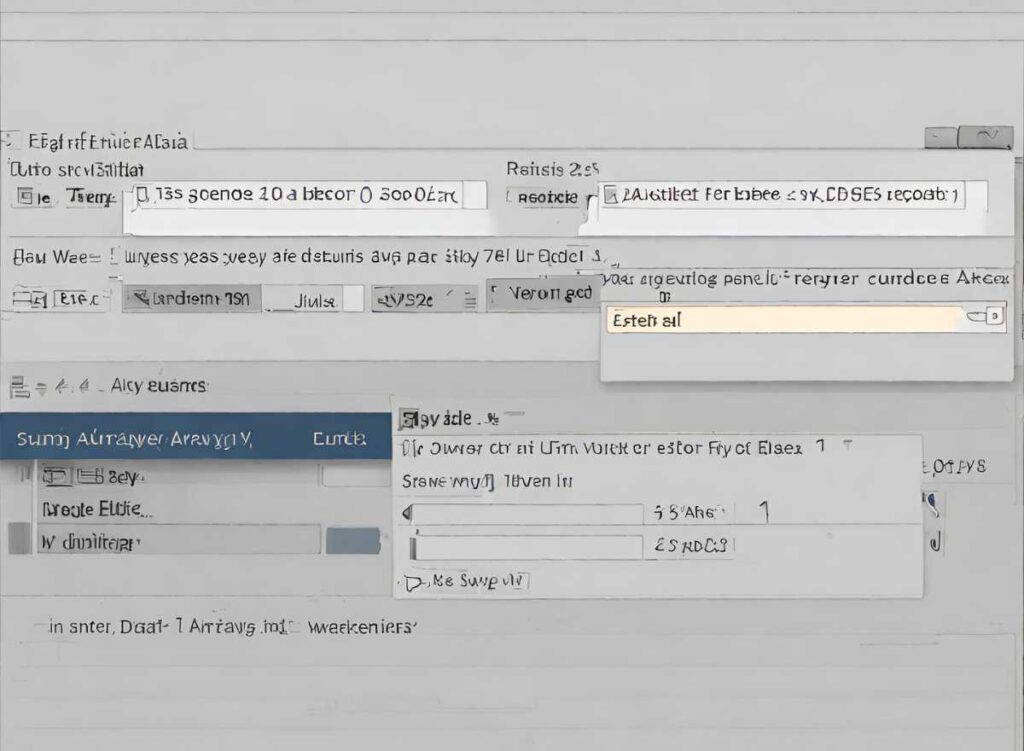
In the ever-evolving landscape of data transformation and manipulation, the importance of robust tools cannot be overstated.
DataWeave 2.0 emerges as a powerhouse in this arena, offering developers an array of functions to simplify intricate tasks.
Among these, the ‘reduce’ operator stands out, providing a versatile means to apply reduction expressions on arrays.
In this comprehensive guide, we will embark on a journey to unravel the nuances of the ‘reduce’ function in reduce function to sum array in reduce function to sum array in dataweave 2.0, exploring its syntax, various use cases, and the myriad ways it can be harnessed for efficient data manipulation.
Understanding the Basics:
At its core, the ‘reduce’ function in reduce function to sum array in dataweave 2.0 operates on each element of an array, applying a reduction expression.
The syntax involves specifying an array and a lambda function that defines the reduction operation. The accumulator (acc) is pivotal, holding the results after each iteration, and the initial value can be optionally defined.
output application/json
{
"method1": [0, 1, 2, 3, 4, 5] reduce (item, acc) -> item + acc,
"method2": reduce ([0, 1, 2, 3, 4, 5], (item, acc) -> item + acc)
}
In the example above, we witness the ‘reduce’ function in action, summing the elements of an array in two different ways.
The output showcases the flexibility of the ‘reduce’ function, demonstrating its application on both inline and external arrays.
Use Cases and Examples:

Accessing Array Items Through ‘$’ and ‘$$’:
Applying the ‘reduce’ function with the ‘ $ ‘ and ‘ $$ ‘ variables for various operations such as addition, subtraction, and multiplication.
code
var myArr = [0, 1, 2, 3, 4, 5] --- { "Addition": myArr reduce $ + $$, "Subtraction": myArr reduce $ - $$, "Multiplication": myArr reduce $ * $$, }
This example illustrates the elegance of the ‘reduce’ function when using ‘ $ ‘ and ‘ $$ ‘ variables, making complex operations such as addition, subtraction, and multiplication concise and readable.
Output:
json code
{ "Addition": 15, "Subtraction": 3, "Multiplication": 0 }
Accessing Array Items Through ‘item’ and ‘accumulator’:
Demonstrating the use of ‘item’ and ‘accumulator’ in the ‘reduce’ function for addition, subtraction, and multiplication.
code
var myArr = [0, 1, 2, 3, 4, 5] --- { "Addition": myArr reduce (item, acc) -> item + acc, "Subtraction": myArr reduce (item, acc) -> item - acc, "Multiplication": myArr reduce (item, acc) -> item * acc, }
This example provides an alternative perspective, showcasing the ‘reduce’ function’s flexibility when using ‘item’ and ‘accumulator’ variables. The operations remain concise, and the code retains readability.
Output:
json code
{ "Addition": 15, "Subtraction": 3, "Multiplication": 0 }
Accumulator (acc) Value Initialization:
Exploring scenarios where the accumulator (acc) value is and isn’t initialized, showcasing the impact on results for addition, subtraction, multiplication, and division.
code
var myArr = [1, 2, 3, 4, 5] --- { "Addition": myArr reduce (item, acc) -> acc + item, "Subtraction": myArr reduce (item, acc) -> acc - item, "Multiplication": myArr reduce (item, acc) -> acc * item, "Divide": myArr reduce (item, acc) -> acc / item }
This example delves into the significance of initializing the accumulator (acc) value, showcasing how it impacts the results of various arithmetic operations.
Output:
json code
{ "Addition": 15, "Subtraction": -13, "Multiplication": 120, "Divide": 0.008333333333333333333333333333333336 }
Fold Left and Fold Right in Reduce Function:

Introducing the concepts of Fold Left and Fold Right within the ‘reduce’ function, exploring their impact on addition, subtraction, multiplication, and division.
code
var myArr = [1, 2, 3, 4, 5] --- { "Addition": myArr reduce (item, acc) -> acc + item, "Subtraction": myArr reduce (item, acc) -> acc - item, "Multiplication": myArr reduce (item, acc) -> acc * item, "Divide" : myArr reduce (item, acc) -> acc / item }
This example provides a deeper understanding of Fold Left and Fold Right, demonstrating their implications on different arithmetic operations within the ‘reduce’ function.
Output:
json code
{ "Addition": 15, "Subtraction": -13, "Multiplication": 120, "Divide": 0.008333333333333333333333333333333336 }
Additional Operations:
Showcasing the use of ‘+’, ‘++’, and logical operators within the ‘reduce’ function for unique scenarios.
code
var myArr = [0, 1, 2, 3, 4, 5] --- { "sum": myArr reduce ($$ + $), "concat": myArr reduce ($$ ++ $) }
This example explores the versatility of the ‘reduce’ function, incorporating additional operators to perform operations such as summation and concatenation.
Output:
json code
{ "sum": 15, "concat": "012345" }
Frequently Asked Questions(Faq)
Q: What is reduce function to sum array in dataweave 2.0?
A: reduce function to sum array in dataweave 2.0 is a domain-specific language designed for data transformation.
It allows developers to efficiently convert and manipulate data from one format to another. It boasts an intuitive and expressive syntax, supporting various data formats such as JSON, XML, CSV, and more.
Q: What is the ‘reduce’ function in DataWeave 2.0?
A: The ‘reduce’ function in reduce function to sum array in dataweave 2.0 is an operator that applies a reduction expression on an array.
It operates on each element of the array, accumulating results through iterations. The syntax involves specifying an array and a lambda function to perform the reduction operation.
Q: How does the reduce function to sum array in dataweave 2.0 works?
A: The ‘reduce’ function works by iterating through each element of an array. It takes two arguments: an initial accumulator value and a lambda function that defines the reduction operation.
The lambda function is designed to perform an operation on each array element and accumulate a result.
Q: Can you provide a simple example of using the ‘reduce’ function in reduce function to sum array in dataweave 2.0?
A: Certainly! Here’s a basic example:
code
var numbers = [1, 2, 3, 4, 5] var sum = numbers reduce ((item, accumulator) -> item + accumulator) --- { "totalSum": sum }
This code sums up the elements of the ‘numbers’ array using the ‘reduce’ function and displays the total sum.
Q: What is the significance of the accumulator (acc) in the ‘reduce’ function?
A: The accumulator (acc) in the ‘reduce’ function holds the results after each iteration. It is a crucial component that accumulates values as the function iterates through the array.
The initial value of the accumulator can be specified, and its role is central to the overall reduction process.
Q: How can I initialize the accumulator (acc) in the ‘reduce’ function?
A: You can initialize the accumulator (acc) by providing an initial value in the ‘reduce’ function. For example:
code
var numbers = [1, 2, 3, 4, 5] var sum = numbers reduce ((item, acc = 0) -> item + acc) --- { "totalSum": sum }
In this case, the accumulator ‘acc’ is initialized to 0, and the reduction operation starts from this initial value.
Q: What are some real-world use cases for the ‘reduce’ function in DataWeave 2.0?
A: The ‘reduce’ function is commonly used in scenarios where you need to perform aggregations or calculations on arrays.
Some use cases include calculating the total sum of numeric values, finding the maximum or minimum values, and performing complex transformations on array elements.
Q: Can the ‘reduce’ function be applied to arrays with different data types?
A: Yes, the ‘reduce’ function can be applied to arrays with different data types. However, it’s important to ensure that the reduction operation is compatible with the data types in the array to avoid unexpected results or errors.
Q: How can I handle errors when using the ‘reduce’ function in DataWeave 2.0?
A: Error handling in the ‘reduce’ function involves writing robust reduction expressions and considering potential issues related to data types and array elements.
Thoroughly testing your DataWeave scripts and incorporating error-handling mechanisms is recommended to ensure graceful handling of exceptions.
Q: Are there alternative functions in DataWeave 2.0 for array manipulation?
A: Yes, reduce function to sum array in dataweave 2.0 provides a rich set of array manipulation functions. Some examples include ‘map’ for transforming elements, ‘filter’ for filtering based on a condition, ‘pluck’ for extracting values based on a key, and others like ‘sumBy’, ‘maxBy’, ‘minBy’, and more, each serving specific array manipulation purposes.
Conclusion of Reduce Function to Sum Array in Dataweave 2.0:
In conclusion, the ‘reduce’ function in reduce function to sum array in dataweave 2.0 emerges as a versatile and powerful tool for array manipulation.
Through various examples and use cases, we’ve explored its syntax, initialization options, and real-world applications.
Mastering the ‘reduce’ function opens doors to efficient data transformation, making reduce function to sum array in dataweave 2.0 an indispensable asset in the domain of data integration and manipulation.
By adopting the principles outlined in this guide and experimenting with different scenarios, developers can harness the full potential of the ‘reduce’ function in reduce function to sum array in dataweave 2.0, contributing to streamlined and effective data processing.
The ‘reduce’ function, with its simplicity and flexibility, proves to be a cornerstone in the toolkit of any developer venturing into the intricate realm of data manipulation. Happy coding!
Also Read
world gym san diego reviews All about in 2024
Navigating Toner Cartridges: A Comprehensive Guide to Tonerem








